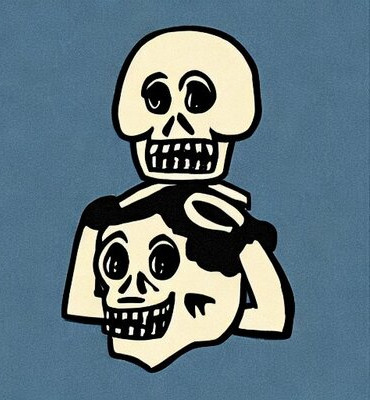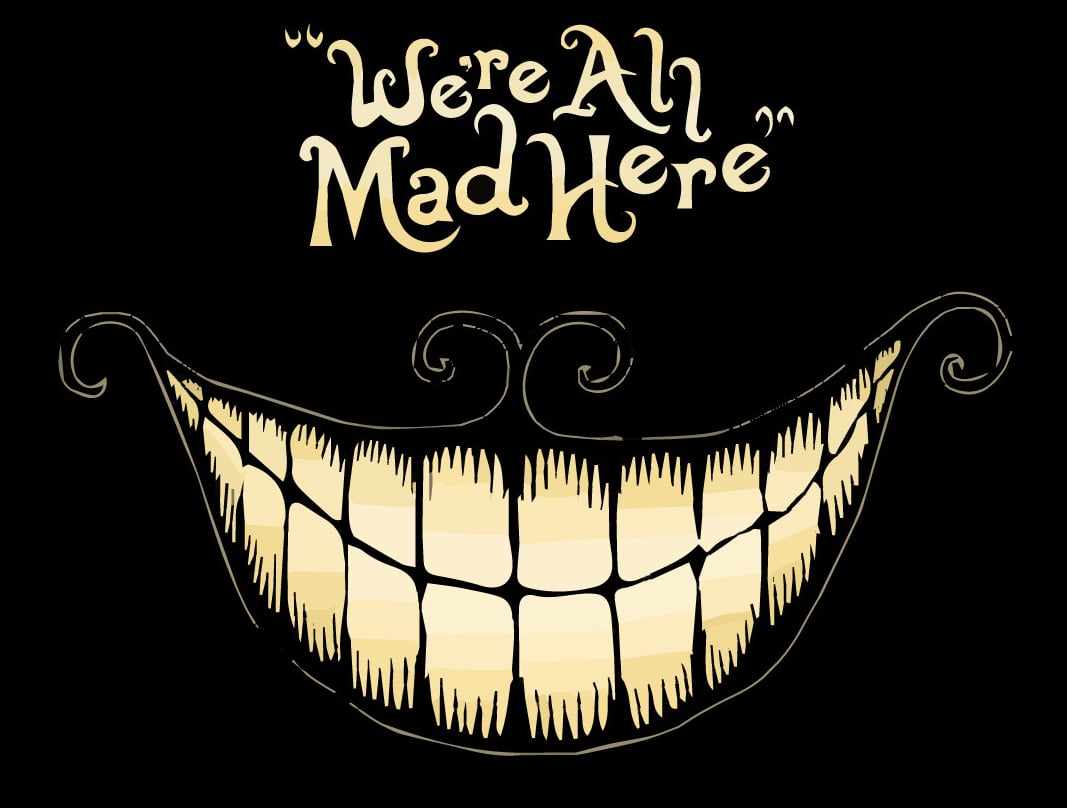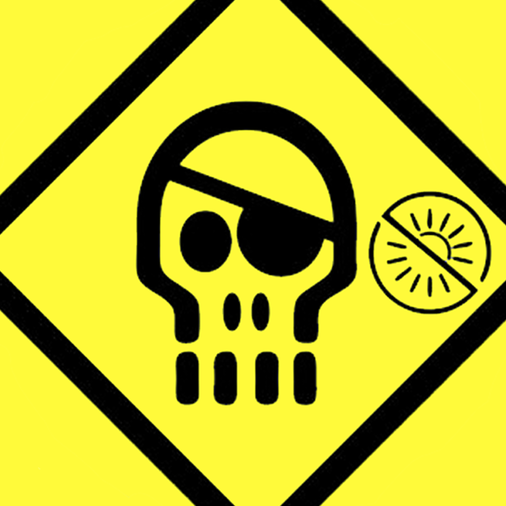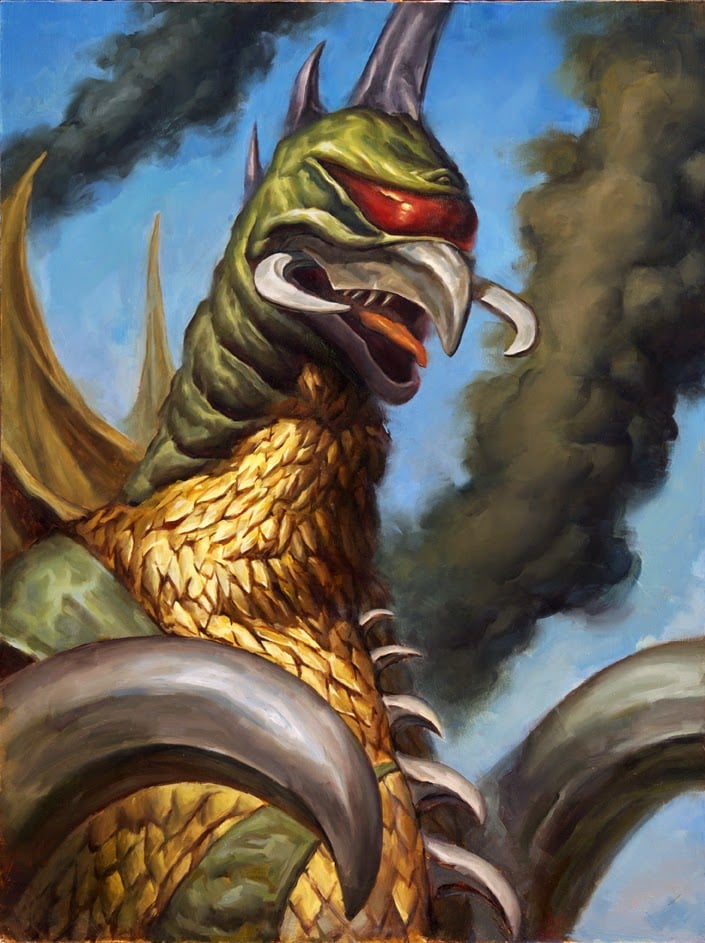Used a couple of US recipes recently and most of the ingredients are in cups, or spoons, not by weight. This is a nightmare to convert. Do Americans not own scales or something? What’s the reason for measuring everything by volume?
deleted by creator
But what if you’re baking, then the measurements are important
deleted by creator
Because it’s quick and the tools to measure volume are cheap and simple and for cooking for a few people in a home kitchen it works well enough.
Apparently the French sent over a metric system for the Americans to use, but the ship was lost.
I’ve seen numerous sources for this.
someone should make an alternate history tv show where the ship made it. bonus if it’s of a parody kind.
OP is asking about volume vs weight, not metric volume vs imperial volume.
If the US had adopted the metric system it wouldn’t matter.
And that still doesn’t answer the question.
You do know that metric measures both volume and weight, right? A cubic centimeter of water weighs one gram.
You can still list an ingredient using one or the other on a recipe. It may be a simple conversion, but 1:1 is still a conversion.
You do know that only water weighs on gram per ml, right?
This is a great fact for if you’re trying to make hot water soup from a recipe written in metric volume measures and you only have a scale.
You might get away if you’re just trying to measure apple juice or something else that’s mostly water, but good luck making Rice Krispie treats
While we’re making soup, let’s base the entire temperature scale on water, too.
And one pint of water is one pound.
You’ve completely missed the point, which is that most of the world measures ingredients (like flour for instance, where one pint is not one pound) by weight and not by volume.
A pint of water is not one pound, its 1.04318, which is a significant difference.
In what widely-used context is a .04318 difference significant?
Not soup. Not bread.
I don’t think even concrete would suffer noticeably from that difference.
Measuring by weight has only been a thing for cooking since digital scales became cheap.
Canada uses a mixture of imperial and metric, but not weights, so that’s an entirely false conclusion you’ve come to.
And that doesn’t help much, that’s only at sea level and a certain temperature, go do some baking with those exact conversions on a mountain and your cake won’t turn out at all.
deleted by creator
I have a cup that’s imperial on one side and metric on the other.
Most Americans I know don’t even have a scale in their kitchen!
I (an American) always wonder what a cup of spinach is. Like I can really pack it into a cup or not and there is a huge difference.
By the way, there’s just one size of cups in America?
A measuring cup is a specific size, about 237mL. There’s a whole system of US measurements, actually:
3 teaspoons in a tablespoon
2 tablespoons in an ounce
8 ounces in a cup
2 cups in a pint
2 pints in a quart
4 quarts in a gallon
Not all cups are measuring cups; if you are having a cup of coffee that doesn’t mean your cup is exactly 8oz. You just infer from context that if someone is talking about ingredients then you should measure them with a measuring cup. (Very commonly you also see cups with graduated markings, which are US Imperial on one side and metric on the other, that go up to 2 cups/500mL.)
fluid ounce, since most liquids used in food are nearly the same density.
/edit to add to this, after a cup most things that are dry are not measure in pints, quarts or gallons. For example, you don’t hear anyone say “you’ll need 1 pint of flour”, they’ll just say 4 cups.
The things people drink out of are many different sizes of course, but when the word “cup” is used in the context of a measure of volume, then yes, they’re called “measuring cups”, and the volume is standardized.
Same thing with teaspoons and tablespoons. They’re not just any random spoon - when talking about measurements, they have a standardized volume and you need to use a cheap and ubiquitous measuring device if you want to follow a recipe precisely.
Most people in USA do not have a scale in their kitchen, but we do have a measuring cup and a set of measuring spoons.
“cup” is a unit of measure like a foot. It measures volume and it is approx equal to 236 ml.
There also exist metric cups with a round 250 ml, supposedly for easier adoption of the metric system.
I’ve seen “cups” used to mean anywhere between 225ml and 250ml. It’s very confusing.
Do Americans not own scales or something?
I do not own a kitchen scale. Outside of baking, volume works well enough.
Not with salt or anything granular. Liquid is probably fine
Literally never had a problem with any recipe, ever. This is a non-issue.
Oh okay well if you’ve not had an issue then it can’t be one.
Honestly, what is wrong with the people left on lemmy, why is everyone like this. There was a few months there where you could talk and have a conversation. Then all the good people left and we just get… this.
what is wrong with the people left on lemmy
You’re the one causing problems here. The others are conversing normally. Lemmy is fine, chill.
I know it’s easy to misread the tone of text, but I certainly didn’t mean to offend you. It’s true that it is a complete non-issue for me and *millions *of Americans. I’m simply stating a fact and in no way judging you or criticizing you for asking the question. I’m giving you an answer from my perspective.
Salt tends to be used in such small quantities that you’ll get much larger errors on the typical kitchen scale than with measuring spoons.
It works well enough for me. Salt is relatively uniform, so there isn’t that much variance. With spices, the variance of the spice strength is greater than the variance caused by compaction.
Outside of baking, the tolerance required to get a dish to taste good is rather wide.
Salf is the definition of not uniform.
Try a spoonful of table salt instead of sea salt next time and see how well that goes. In grams it does not matter.
I have one kind of salt that I cook with. I know that if I use different kinds of salt, it can affect the flavor and concentration, so I just go with one kind of salt.
Never have I ever thought “oh it would be so much easier to pour my flour into a bowl on a scale” rather than just scoop out a few cups.
Unironically, I do in fact do this all the time. I make large batches when I bake, so it’s easier to just tare and measure everything directly in the stand mixer bowl instead of scooping 16 cups. It’s also less clean up afterwards!
i suppose that does seem easier with high quantities!
Measuring by volume is fewer steps. You fill it up to the line, done. Much easier than guessing, checking the weight, adjusting etc.
I don’t think Americans are the only ones who do it the easier way…
Measuring by weight is great for pros who want to work fast. Most people are not pros.
American here but I do a lot of baking, I do own a scale and prefer to weigh ingredients because I’m amazed at the different quantities of flour I can get from cup to cup depending how packed the flour is or how I scoop it.
Yeah, that’s the sort of thing which worries me. I suppose if it’s a recipe which doesn’t need precise measurements it doesn’t matter.
Baking can be troublesome, but it’s usually only flour that gets compacted to a problematic degree. Most good recipes will at least specify “sifted”. Otherwise, volume works about as well, and the cups and spoons will be standardized measurements with only a dim historical connection to the kind of insanity you may be be picturing.
Mass would probably still be better of course, it’s just not quite the literal madness that some think.
There’s also volume measurements of things like butter and honey, which are their own nightmare. Yeah, I’m totally going to carve 17 3/4 tablespoons of butter…
General rule when measuring by volume is to not pack it unless the recipe says to.
Measuring cups (special cup and fractional cup sized cups) are pretty convenient.
Although it’s worth bearing in mind that a US cup is 240ml, an Imperial (British) cup is 284ml and a metric cup is 250ml.
No think, grab spoon/cup, dump.
Source: USAian.
Really. But which cup or spoon? I have a shit load of different kind of cups and spoons.
Its not any random spoon or cup. We all have measuring devices of standardized volumes.
for example:
https://www.amazon.com/Stainless-Measuring-10-Piece-Kitchen-Gadgets/dp/B091JXDLDXIsnt weight easier then? One scale thats it? But then again to each his own.
If you’re baking something that needs exact amounts of certain ingredients, then yeah, a scale is easier. A scale is more accurate, but its slower than using a measured scoop for recipes that don’t require more precision than the scoop provides.
You don’t actually need the full set. If all you have is 1 tablespoon and 1 cup, it will usually be OK to just eyeball the fractions.
Measuring cups or spoons.
Or, so long as you use the same device across a recipe, the proportions will work.
This actually clarifies a lot, I didn’t realize there was a misconception that Americans are just using random cups and spoons.
Because it’s quicker to just use a measuring cup than by weighing it out every time, I assume.
I do have a scale, but I mostly use it when portioning out a big chub of ground turkey or beef.
If you’d use metric, then weight & measurements on measuring cups would be basically the same. Like, 1 liter or milk or water is exactly 1 Kg. Using arbitrary measurements like “cups” or “feet” are just confusing and prone to error.
Water isn’t the only ingredient. One liter of flour is not nearly one kilogram. More importantly, the mass of one liter of flour varies a lot depending on how much it settled in the container. That’s why weight is always the better way to measure ingredients.
We know
Milk has a specific gravity slightly higher than 1, so that isn’t accurate.
Also, “cups” and “feet” aren’t arbitrary. They aren’t part of the metric system, but a cup is a standardized unit of volume and a foot is a standardized unit of length.
It’s close enough for home cooking, the specific gravity of milk is around 1030g/L so unless your recipe calls for multiple liters of Milk the small difference isn’t going to affect the result.
It’s close enough for home cooking
And now you are getting to the reason why American use volume for recipes. If I don’t need the precision of mass for recipes as it won’t appreciably affect the taste, then why break out the scale?
Because the difference between packing a cup of flour and not packing a cup of flour is as much as 30%
It doesn’t really matter for liquids, but dry ingredients are a whole other ballgame when it comes to this mess.
It’s really mainly only flour though, because can be compacted, most of the things that you’re using in the kitchen like baking powder or sugar aren’t going to be compacted to any appreciable level.
For flour, you pour it into your measuring cup and then run the spine of a knife or something over it to get rid of the excess flour and get a level cup
There are many of other things that can be compacted or have different volume to weight ratios.
Corn starch is like flour, you can pack it down.
Salt (Table vs Kosher) Kosher salt has about half the volume to weight as table salt.
Shredded Cheese (this one always bugs me. Is it 3 cups after shredding, or before… how packed in should it be), etc.
In my other responses, I’ve noted that I don’t bake. In other people’s responses, they’ve noted that there are still a lot of baking recipes out there that don’t require precision.
Precision in baking is massively overstated. The earliest recipes are in parts if you’re lucky. More likely they are mix in these ingredients until it looks right.
Elevation changes everything though and if you don’t adjust the measurements change more.
If you’re at sea level, sure.
Exactly. How is a foot anymore arbitrary then a meter?
Or a cup anymore arbitrary then an ounce?
If you have to ask that you have no idea how metric works
Until a few years ago, a kilogram was defined by a block of metal.
From 1799 to 1960, the metre was defined by another block of metal. Before 1799, it was defined by a measurement that was hard to verify.
That kind of sounds arbitrary.
On March 30, 1791, the French Academy of Sciences defined the length of a meter. Before this date, there were two definitions to this measure of length: The first was based on the length of a pendulum and the second was based on a fraction of the length of a half-meridian, or line of longitude. The French Academy chose the meridian definition. This defined one meter as one ten-millionth of the distance from the Equator to the North Pole.
The meter is the basic unit of distance in the International System of Units (SI), the world’s standardized system of measurement. Since the 1960s, all countries have adopted or legally recognized the SI. As a universal standard of measure, the meter helped ease the exchange of commerce and scientific data.
However, the definition of a meter has changed since 1791. In 1983, the meter got its current definition. The meter is defined as the length of the path travelled by light in a vacuumduring a time interval of 1/299,792,458 of a second.
The meter was never to do with metal, and every metric definition is scientifically found, not based off of someone’s foot.
A fraction of the Earth’s diameter isn’t a sound scientific reasoning to define a length. And after that, the definition reverted back to a similar definition of a foot, a fixed length of an item, similar to a foot.
The two main benefits of the metric system are the decimalized behavior of its units and that the scientific community adopted it early, creating additional units from the standard and allowing for greater precision of the initially defined units over time.
However, the value in the meter being its length is the same as everyone agreeing the Prime Meridian goes through Greenwich, UK; it is because everyone agrees to it.
You are way overthinking this.
Also, a foot is just a scientific as any other definition as long as you use the same foot every time.
Can you get me All of the things that I would need to Measure the speed of light in a vacuum, then do the math to divide all that?
Because that is what the average layman would need to verify what a meter is.
Imperial measurements were based on arbitrary things, metric has specific scientific definitions for their weights.
1l of water is 1kg at sea level, why the fuck is kings foot size the defacto foot?
Imperial measurements were based on arbitrary things, metric has specific scientific definitions for their weights.
What do you mean? A pound is legally defined as 0.45359237 kilograms.
And the kilogram is defined:
The kilogram, symbol kg, is the SI unit of mass. It is defined by taking the fixed numerical value of the Planck constant h to be 6.62607015×10^−34 when expressed in the unit J⋅s, which is equal to kg⋅m^2 ⋅s^−1, where the metre and the second are defined in terms of c and ΔνCs.
These are all currently defined off of the same universal constants, just with different multipliers, which are all arbitrary numbers: 6.62607015 is just about as arbitrary as 0.45359237. Hell, the number 10 is arbitrary, too, so we still use a system for time based on dividing the Earth’s day into 24 and 60.
Like, I get that there’s some elegance in the historical water-based definitions derived from the arbitrary definition of length, but the definition of “meter” started from about as arbitrary a definition as “foot” (and the meter was generally more difficult to derive in the time of its adoption based on the Earth’s dimensions).
I’ll nitpick that said definition is also arbitrary. Why is it 1l of water at sea level, and not molecular weight of the water? And why a Liter anyway.
Even metric units like time are somewhat arbitrary. Why is a second based on caesium frequency, and not some other element?
I’ll nitpick that said definition is also arbitrary. Why is it 1l of water at sea level, and not molecular weight of the water? And why a Liter anyway.
Why? Because 1L is 1000 Cubic centimeters, which takes 1000 calories to raise 100 degrees to boiling point.
Nothing is arbitrary with metric, everything is also directly related to every other measurement.
Because 1 Drakon is 1000 Cubic 100tholians, which takes 1000 Vornies to raise 100 degrees on the Flugar scale to boiling point.
Metric is very scientific, but it was made through arbitrary means. They chose to make it easier than imperial by using divisions of 10. But it’s all based on a single measurement that they made up through arbitrary means.
“We have this length called a meter. How do we define it? Let’s use it to measue something in nature and then use that measurement to define it.”
Milk has a specific gravity slightly higher than 1, so that isn’t accurate.
In this context milk is a bad example because the difference between 1.03g/ml and 1g/ml is negligible in a kitchen. Even oil (0.92g/ml) is close enough.
This matters the most for stuff like below (with 1cup = 240ml):
- honey: 340g/cup = 1.4g/ml
- sugar: 200g/cup = 0.85g/ml [varies depending on granularity]
- flour: 120g/cup = 0.5g/ml [sieved, and “properly” measured. It’s a PITA to measure it by volume.]
Also, “cups” and “feet” aren’t arbitrary.
All units are arbitrary, be them metric or esoteric.
In this context milk is a bad example because the difference between 1.03g/ml and 1g/ml is negligible in a kitchen. Even oil (0.92g/ml) is close enough.
The context is that if you are going to hand wave away a 3% difference in a quantity, then having to weigh everything probably isn’t important.
The context [SIC - rationale] is that if you are going to hand wave away a 3% difference in a quantity, then having to weigh everything probably isn’t important.
That’s poor reasoning; ignoring a tiny difference doesn’t imply ignoring larger ones. Myself mentioned three cases where the difference matters, with one (flour) being highly variable.
A better argument to defend your point would be that most differences in the kitchen are tiny.
I’ve been making that argument in other comments. If I had to argue the nuances of this argument in every comment, I’d be copying and pasting pages long comments that no one would read.
1 liter of milk weighs more than 1 kilo. Milk is denser than water therefore 1 liter of it has to weigh more than water.
Edit: I just looked it up and 1 liter of milk is 1.03 kilos.
Well since we’re nitpicking, a kilogram is a unit of mass, not weight. So unless by “kilo” you meant kilonewton…
Ding ding ding!
So many in the comments are talking about volume being more convenient but I find it so much more convenient to put a bowl on a scale, tare it, measure, and set it aside. Sure that’s more steps than using a cup, but when I have to fumble with a cup, a 1/3rd cup, a teaspoon, a 1/2 teaspoon and a tablespoon, all for a single recipe, especially one where dry and wet ingredients are being measured, a pain in the ass. So many little dishes that I may or may not need to rinse and dry between ingredients that call for the same measurement.
For the record I’m an American. I will sometimes ditch a recipe when I see it calls for volumetric measurements.
Go back 100, 200 years.
Hell, go back 40 years. Scales were less available, and before digital scales, much slower, take up space, and cost much more than cups and spoons, which you would still need.
100 years ago, even a poor person with little space could have a full set of measuring cups/spoons.
Cups and spoons are sufficiently accurate for anything other than baking. Even with baking, many simpler recipes it’s still OK. My mother and grandmother baked many things using cups and spoons.
I still use cups and spoons for anything other than baking - they’re sufficiently accurate. Why pull out a scale for things like 1/8 tsp ground pepper? Is that even a gram?
King Arthur, the flour company that’s been around over 220 years, publishes numerous recipes that were originally in cups and spoons (because those were the tools 200 years ago), and those recipes are still in cups and spoons. Their muffin recipe is delicious.
English muffins originated in the late 1800s, using volumetric measures - they’re still around, still delicious. I’ve made them, using volumetric measures.
Ever weighed 8oz of water?
Although with things like spices, there’s no point in measuring them anyway. Spices are almost always added to taste, so it’s easier to think in terms of ‘x hand movements with the container’.
And yes, I have actually weighed 8oz of water. Well, not specifically 8oz, but I’ve certainly weighed out water to ± a couple grams for a recipe. If a recipe is specific about contents, why would I not measure it out?
So, what does 8 ounces of water weigh?
Also, tell a restaurant or a serious cook to not measure spices. You’re gonna gave a bad time with more complex recipes.
You don’t need to weight water if you don’t use a measurement system from the dark ages.
That wasn’t the question.
And stick your insults up your ass.
So, what does 1/8 tsp of ground pepper weigh.
It weighs a cup
Hahaha, you win! 🤣
Have an upvote
Now imagine doing this before cheap digital scales were available. Cheap analog kitchen scales were utter garbage – inaccurate, wobbly, bulky, and sometimes impossible to tare – but cheap measuring cups and spoons generally work very nearly as well as expensive ones.
Oh my god, rinsing a few dishes. How will you ever recover.
It’s a lot easier for me to scoop 1/2 teaspoon of two spices, one tablespoon of another, and 2 teaspoons of a fourth than to measure 1.8 grams of one, 2.2 grams of one, 5.2 grams of one, and 3.8 grams of a fourth. The scoops I can put in the container and level off the top using the same container. The other way, I have to gently sprinkle or slowly scoop and sprinkle so it doesn’t go over the required amount.
Way faster for me to scoop, level, dump.
History.
Why do Brits use Stone for weight of people? Same answer.
Not quite the same as Stones and Kilogrammes are both units of weight. Using cups is like weighing somebody using those luggage size baskets in the airport.
Because you can’t pack a scale and weights on a cart as easily as you can a set of cups?
Why are you using weights?
Digi’s are like ten bucks
They are now. Not when people were going out west on wagons. As stated above, it’s because of historical reasons.
I’ve been cooking a lot lately. I don’t measure anything. I eyeball my most stuff anyway. If I understand the recipe, then I know how much is needed. It takes practice, but it’s much easier than weighing or using measuring cups.
Do you really believe that the people who wrote the recipe measured everything to perfection while keeping score of the exact amounts and timing through trial and error? No, they didn’t. They made something and then estimated roughly how much they used when writing the recipe afterwards.
The initial recipe that would be true.
But then they use the recipe card and make the dish and realize “oops need more of that” Then they update the card and make sure the recipe is correct.
Tradition, and its dumb as hell since we have set the official definition of every “imperial measure” to metric we just keep using the silly ones.
We can’t measure in feet or inches because it would be ambiguous about how wide to make it
As evidence I would like to enter the subway foot-long controversy
Elaphant’s foot pizza should be a thing!
It is for people with flaky 3d printers.



















